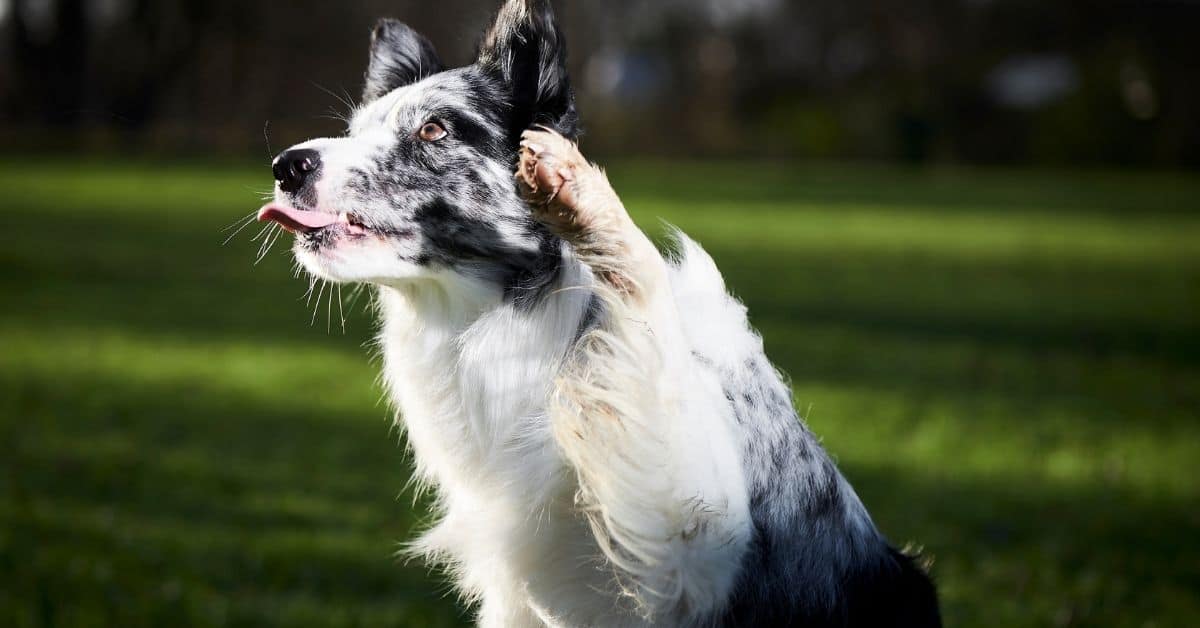You can always teach your dog a new trick at any time.
Dogs actually like the challenge of learning new skills and the treats that come with them as they get better at them.
Healthy treats should be readily available if you wish to train your dog.
To avoid your dog from growing bored during training sessions, keep sessions under 10 minutes long and focus on teaching the fundamentals initially.
Giving your dog a treat right away after they do a trick successfully will help them immediately associate the behavior with food.
There are a lot of different dog tricks to learn.
In the list below, we share with you easy tricks to teach your dog, some are very basic tricks and other are fun tricks.
Just be patient; some dogs take longer to pick up new skills than others and most important: have fun!
Be Quite
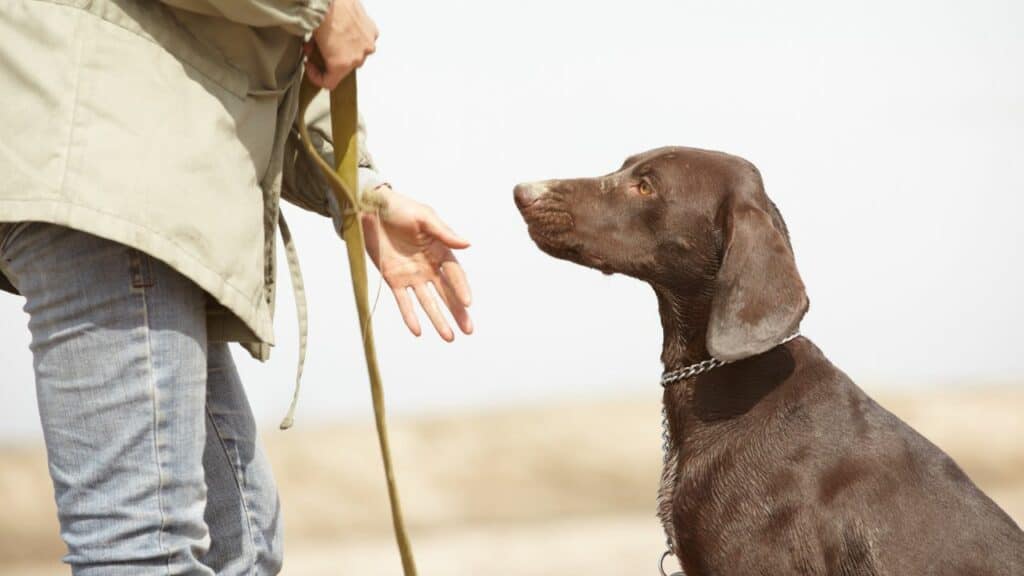
It’s a good idea to teach “quiet” first, particularly if your dog is a chatty one.
Have a selection of tender, tasty goodies on hand.
By rewarding the dog with a goodie in between barking, you can educate it to be “silent.”
Use a marker, such as a clicker or your voice saying “yes,” when the silent moment occurs to make it obvious that you are rewarding the stillness and not a bark.
Start off by rewarding a brief time of silence, then progress to longer and longer periods.
Once the dog regularly exhibits the desired behavior, add a verbal signal (such “calm”).
The dog might not link the signal to the behavior if you start giving it before the animal starts acting out the activity.
Instead, teach the dog the behavior first, and then begin providing the cue as the dog demonstrates it.
Move the cue backwards gradually until it is given just before the behavior.
If done correctly, this is a simple method for teaching the animal that a specific cue corresponds to a specific activity.
Your dog will learn that if you command her to remain quiet, you will only treat her if she stays quiet.
Sit
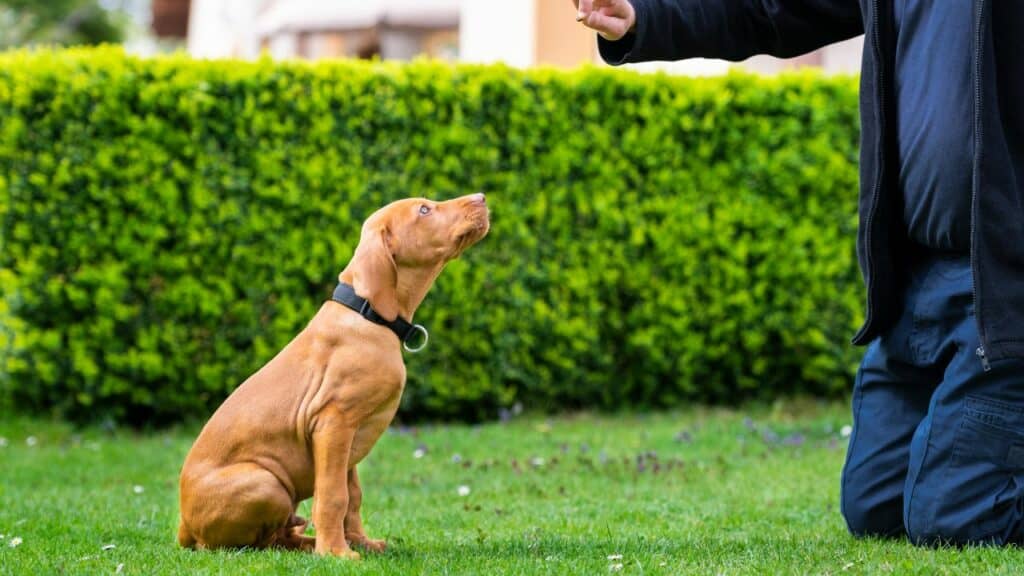
One of the most basic commands to learn your dog is the sitting position.
Let your dog in the standing position sniff a little, pungent treat you are holding in your hand.
Raise your hand a little above their head and toward their back as they are sniffing the treat.
They are prompted to look up and put their bum on the floor by this motion.
As soon as your dog is in the sitting position, praise them and give them a treat as a reward.
Repeat the previous step, this time tempting your dog with one hand while rewarding them with a goodie with the other.
Then it’s time to remove the food lure and replace it with a vocal cue and a hand signal. Raise your hand to your shoulder while saying “sit.”
Give your dog praise and a treat if it sits.
Repeat the hand motion if they don’t sit.
You can train your dog to just respond to the voice cue once he has mastered the hand signal and voice cue.
When your dog sits, say “sit,” wait three seconds, then signal with your hand before rewarding them.
Start reducing the treat reward now that your dog can sit when asked (but not the praise).
Treat only the faster sits while still recognizing and praising the slower sits.
As a result, your dog ought should sit as soon as you command them to.
Give Paw
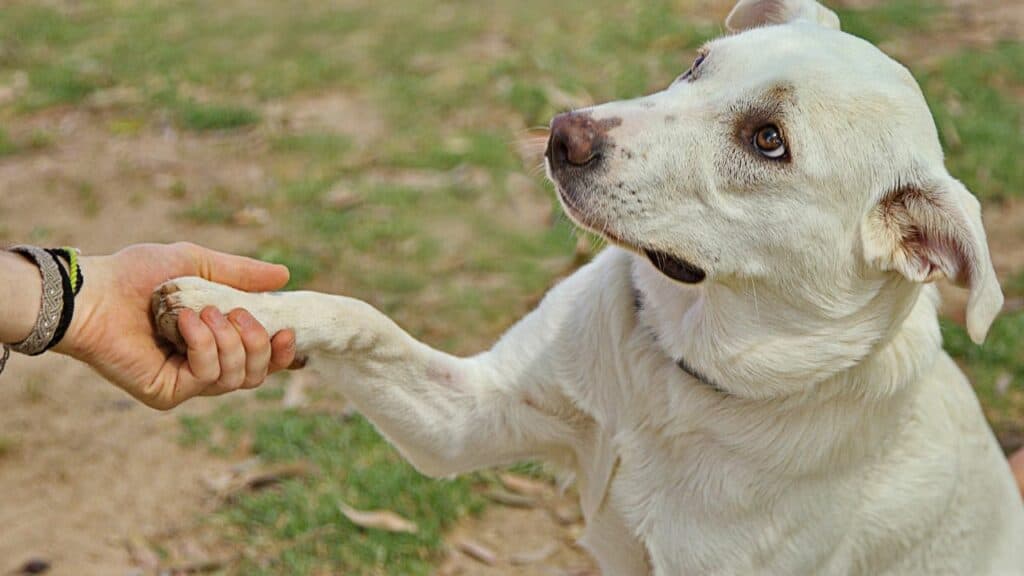
A small treat should be held firmly in your hand so that your dog can smell it but not see it.
Make sure your dog is seated.
Encourage your dog to make an effort to snag the treat. Most dogs will attempt to use their paw to open your hand.
Open your hand as soon as their paw touches it, give them the treat, and give them praise as you do so.
Several times, do this. Then, before you give them the treat, start adding a verbal command, like “paw.”
Roll Over
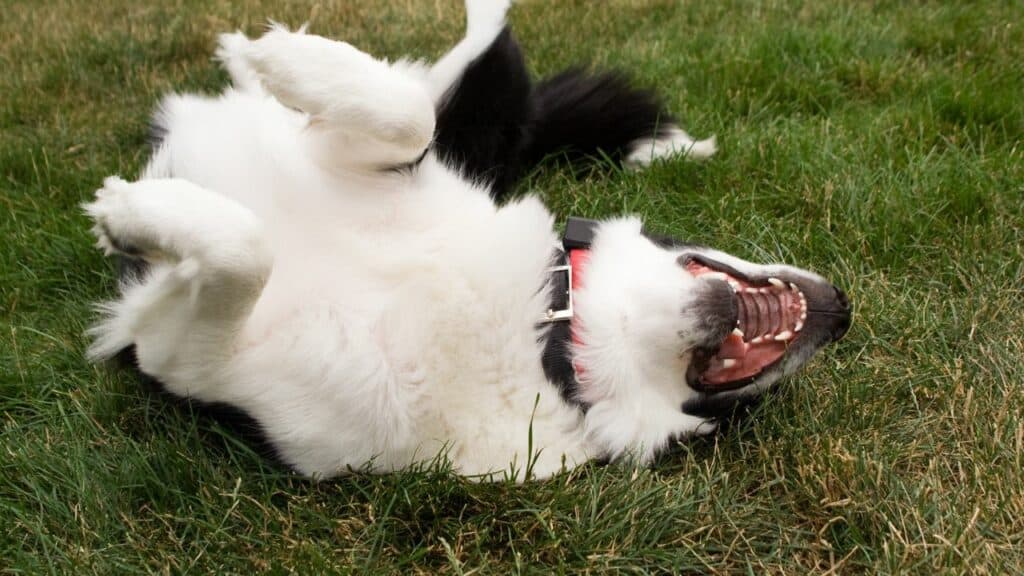
Your dog is prepared to learn how to turn over once they have mastered sitting and lying down.
You can start teaching your dog the trick after it is lying on its back with its head raised, paws resting in front, and tummy on the ground.
Put the dog treat in a spot where it can be seen and smelled by your dog.
Prior to completing the trick, keep an eye out in case your dog tries to steal the reward.
Your dog’s head should turn to look for the treat.
Move the treat so that your dog must lie on their side to follow it, then turn the treat so that your dog must roll over to maintain visual contact with it.
Give your dog the treat once they have fully overturned.
Bow
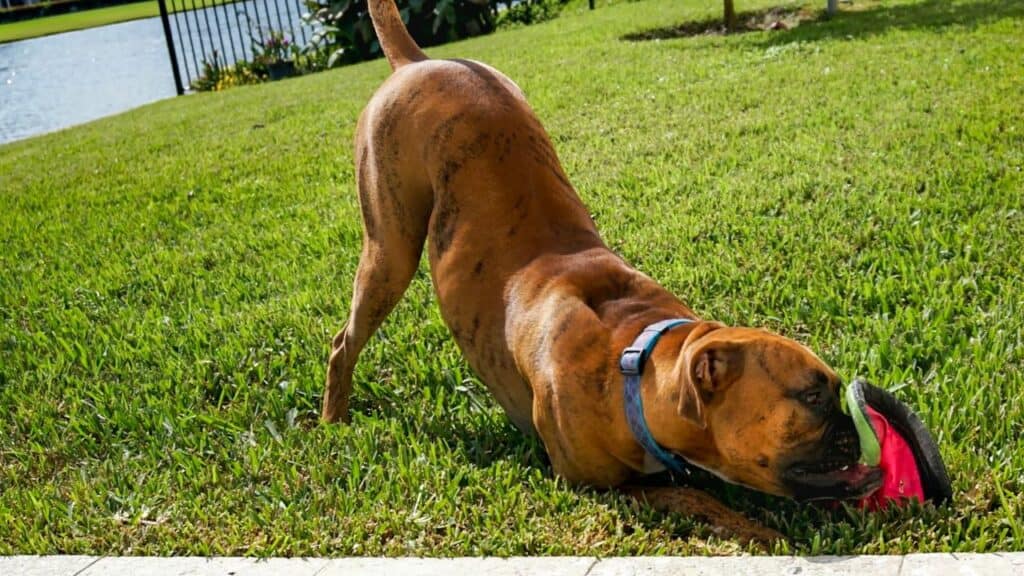
Any dog of any size can learn the take a bow trick.
Your dog will be able to bend over onto his front elbows with his butt sticking up after this training.
It has a cute appearance and gives the impression that your dog is meditating.
For this, all you need are your dog’s preferred treats.
Standing in front of your dog while holding a treat in one hand, begin this trick. Get your dog to stand while you show him the treat.
In order to attract your dog’s nose, lower the treat to the ground. When your dog’s head is almost touching the ground, try to get as close to the floor as you can and then release the treat.
Each time, wait a little longer before releasing the treat, causing your dog to paw at your hand. To get your dog to crouch down, gently push the treat between his legs. Reward any elbow movement in the desired direction.
Each time you do this, your dog will get even lower.
After the bow, you should get him moving so that he won’t be tempted to lie down.
Once he has mastered completely dropping his shoulders, you can add a cue, such as “bow down” or “take a bow,” and gradually stop luring him with treats until he performs it on command.
Wave
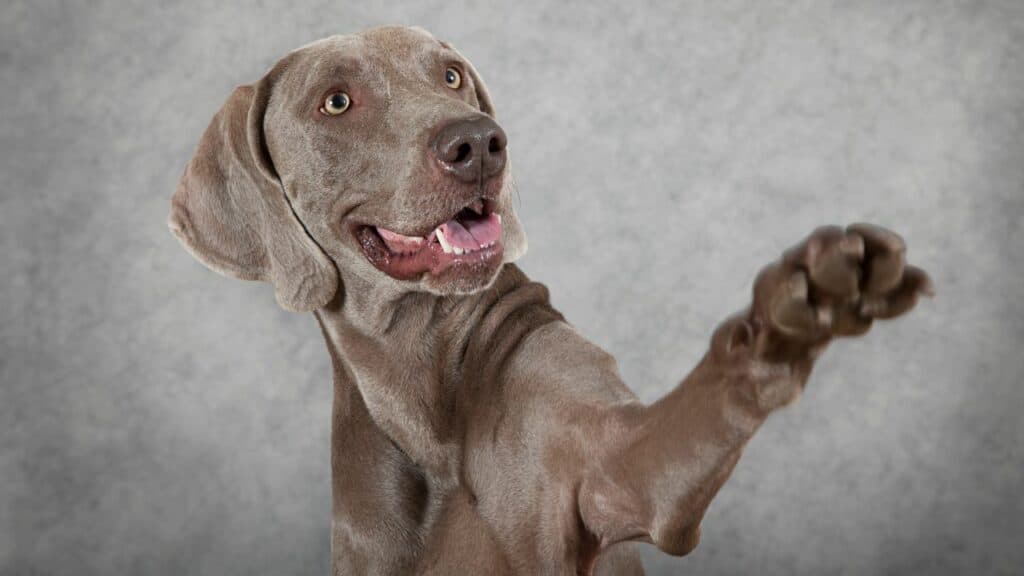
A fun and comparatively easy dog trick is teaching a dog to wave hello or goodbye.
To begin, teach your dog to shake paws.
To teach your dog to lift its paw to wave, you will use the same motion that it uses to shake.
This is a wonderful attention-grabbing technique that will be adorable to observe.
Related: How To Teach A Dog To Shake
Hugging
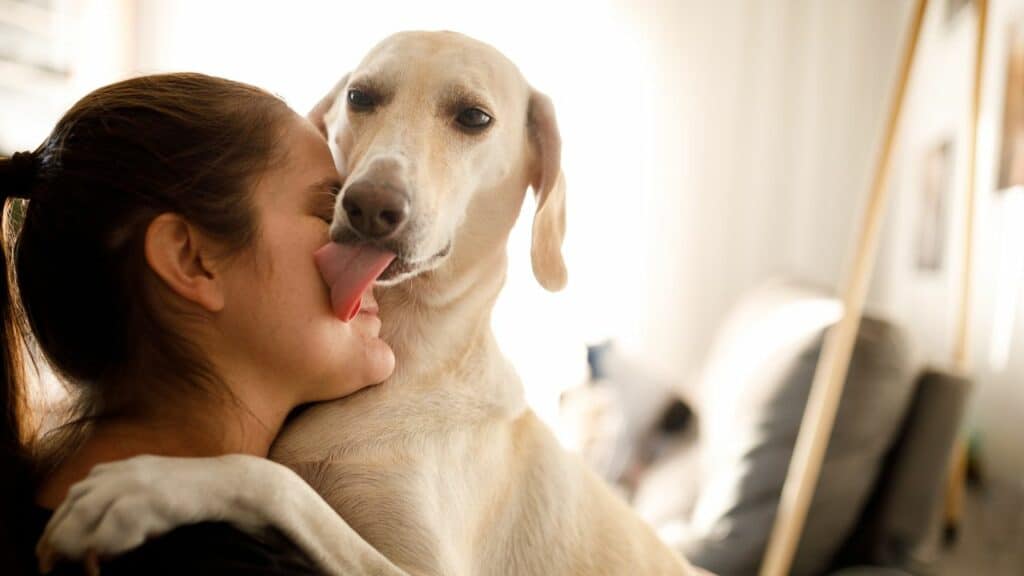
It’s so simple for beginners to teach their dog the cute trick of giving hugs.
You will teach your dog to kneel on the ground with his paws around your shoulders.
In order to prevent your dog from jumping all over the place, it is best to train this trick when he is calm.
Put some treats in your hand and get on all fours in front of your dog.
To get your dog to place his front paws on each of your shoulders, demonstrate the treats to him while moving them in the direction of your head.
You can also gently grab his paws and place them wherever you want if he is still enough.
Reward him for each hug that he gives without bouncing.
With his front paws on each of your shoulders, only encourage one jump in your direction.
Encourage him not to jump up while you are standing or when you are not giving him the command.
You can then add your chosen cue as a command after he learns to hug in order to receive a treat.
This trick will become great with a lot of practice!
Walk An 8
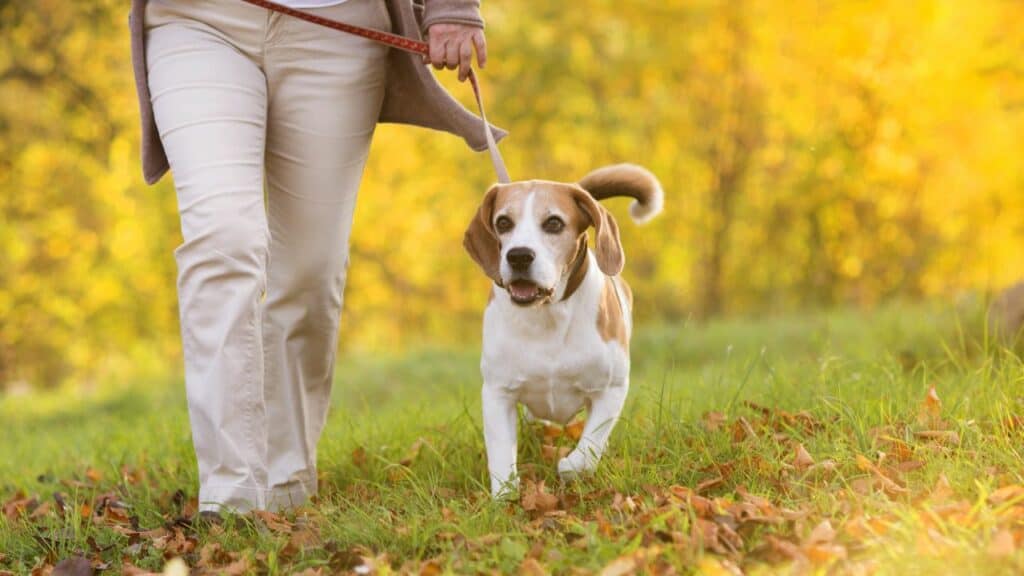
Although this dog trick is more complex than the previous bell-ringing one, it is still a beginner trick because it requires conventional lure training.
Figure 8 is a trick where the dog walks around each of your legs and between them to form an 8.
Start by standing in front of your dog with your legs widely spaced.
By holding a reward in your right hand and luring your dog between your legs, you can get him to approach your right leg.
Every time he approaches the front, treat him.
Change the reward to your left hand, entice him to move from your right leg between your legs to the back, then draw him back to the front.
You and your dog have now performed a figure 8 together.
Continue doing this until you’ve added the desired cue.
Once you simply need to point to the right leg, you can gradually reduce the lure.
Your dog can be taught to perform the figure 8 while you are walking.
To do this, simply take one step with the leg your dog is now turning around, followed by another step with that leg.
Therefore, you will be walking ahead slowly while holding your dog parkouring between your legs.
Crawl

Put your dog in the “down” posture and hold a treat in your palm that is just out of reach for the dog to smell and lick.
Move the treat gently backward while holding it in front of your dog’s nose to make him scramble to get to it.
Every few inches, give your dog praise and a goodie.
Every time you do the trick, make your dog stoop a little bit further to reach the food.
Give Me A Kiss
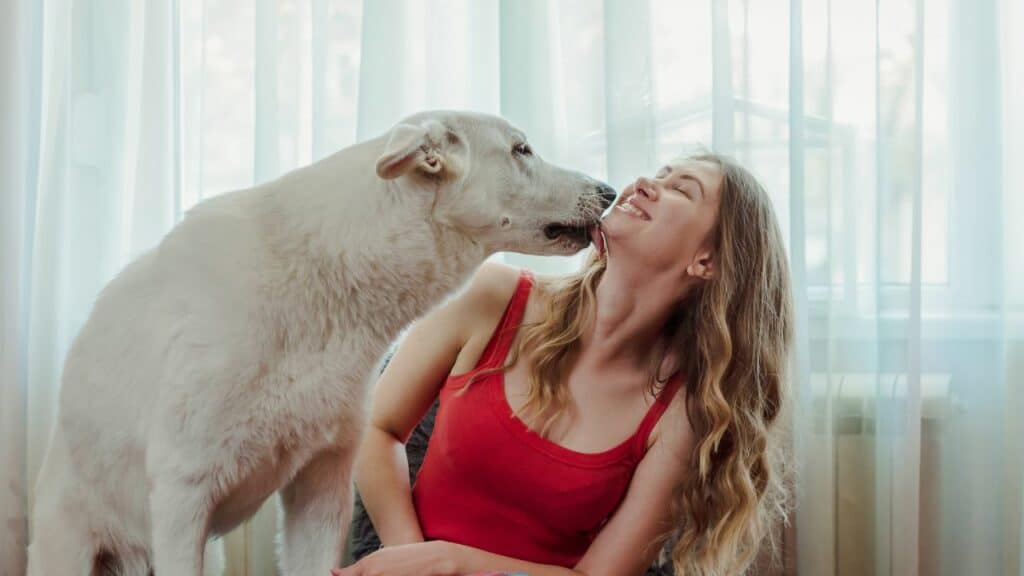
One of the simplest tricks to teach a dog is to kiss.
Even though not everyone enjoys a big, wet doggie smooch, kids typically enjoy this dog trick very much.
You can soon command your dog to show you all the affection you desire by placing a small treat on your cheek and saying the command.
Teaching your dog to kiss on command has another advantage in that it can help you stop uninvited licking.
Play Dead

Make sure your dog is familiar with the fundamental instructions “lying down” and “stay” before you start teaching them how to play dead.
Command your dog to go into the down posture by using the hand signal and verbal command they are already accustomed to.
Several inches above your dog’s nose, place a dog treat between your first two fingers.
Bring the treat on their side to entice them to roll over and continue to inspect it.
Give your dog a treat and some verbal praise when they are lying on the right side.
Reward your dog for lying on its side each time you repeat the activity by doing so multiple times.
Shake Hands
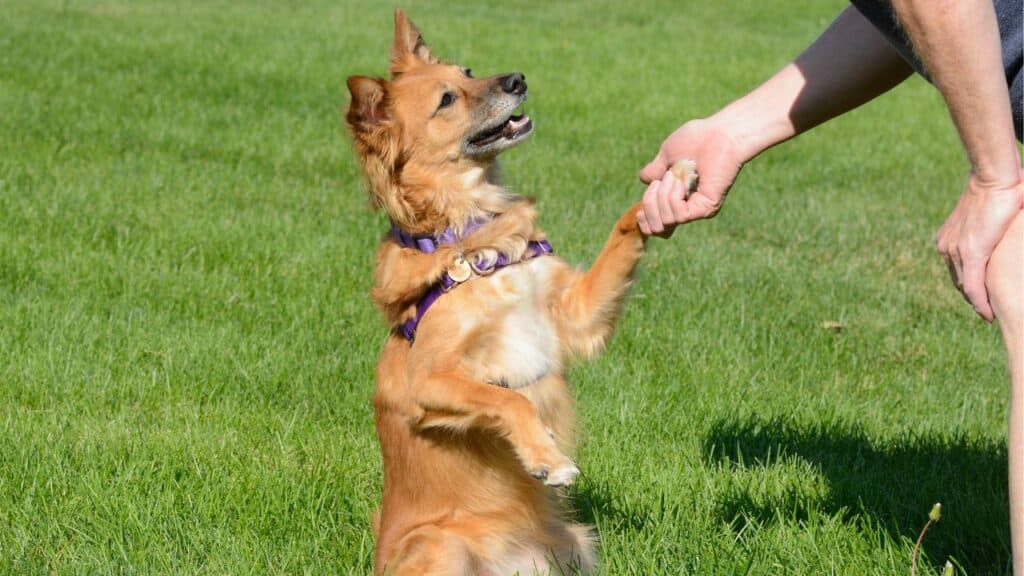
While your dog is seated, hold a treat just out of reach in front of it.
With the hand not holding the treat, tap one of your dog’s front feet while saying “shake hands.”
The majority of dogs will raise a paw in an effort to get the treat.
If your dog raises a paw, grab it with the hand that isn’t holding a treat and repeat, “shake hands,” so that it associates the action with the command.
Repeat these steps until your dog responds to the command to lift his paw automatically.
Hold Something
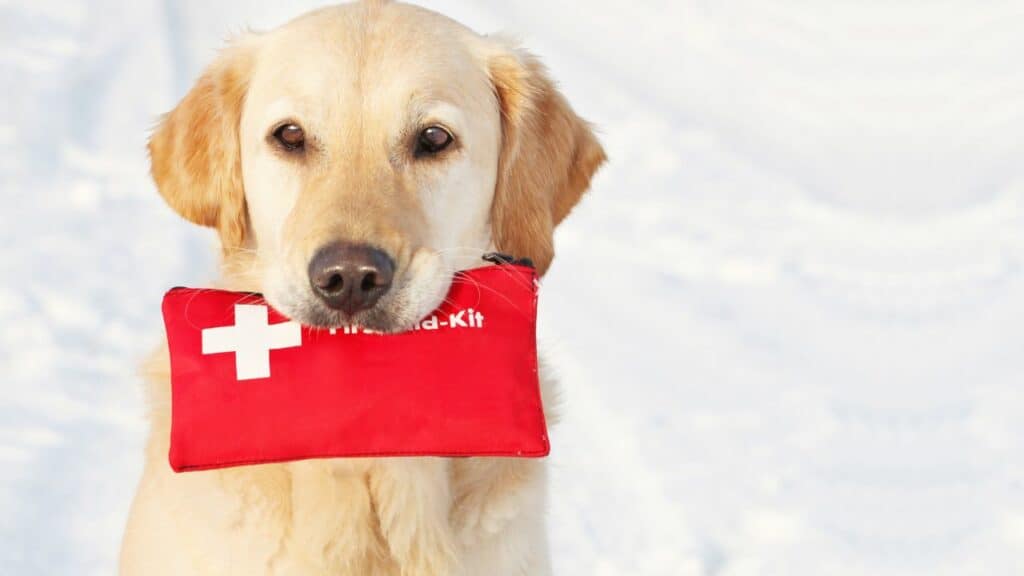
Service dogs frequently perform the task of holding an object in their mouths without chewing or biting on it, which is frequently practiced during obedience training.
For example, you may teach your dog to bring you the newspaper in daily life.
To train your dog, use a straightforward, sized object.
Ask your dog to eat it, then praise him when he does.
Use your dog’s existing cue for picking up objects if it exists.
Support the item with your hand while it is in your dog’s mouth to prevent it from falling out.
Give him the thing several times in this manner, then gradually lengthen the time he must hold it.
Include the signal “hold” once your dog has mastered holding the thing for a few seconds.
Reduce the assistance you are providing for the item and let him to hold it in his mouth for five seconds.
Restart the process without rewarding eating or dropping the thing.
Eventually, your dog will be able to hold it by himself.
Utilize the identical thing each time you are practicing.
Once the training is complete, you can ask your dog to “hold” additional items like a newspaper or remote control.
Three Advantages Of Trick Training
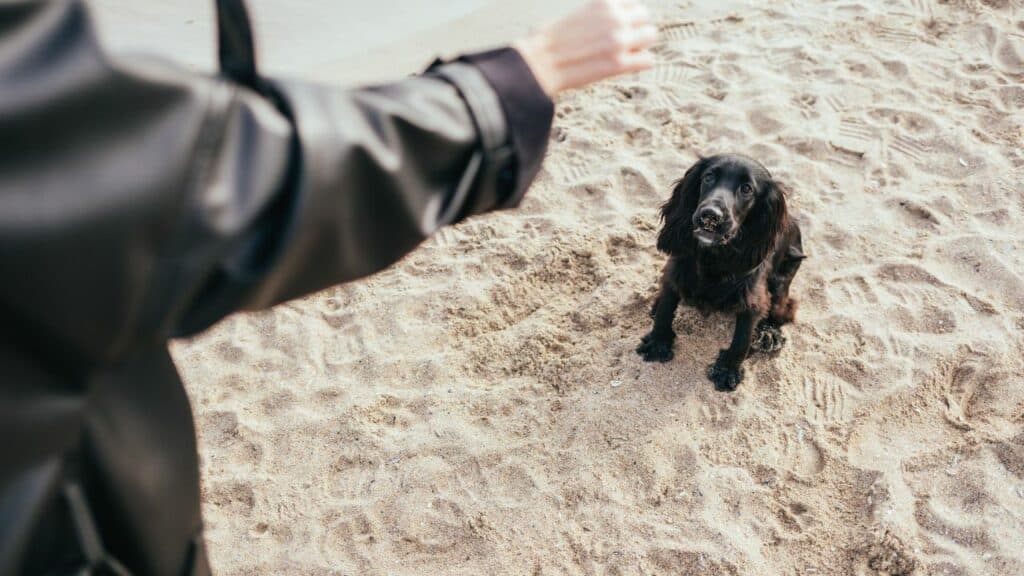
More than just wowing your friends is at stake when teaching your dog entertaining tricks. Introducing tricks to a dog can:
Make Your Bond With Your Pet Stronger
Spending time training your dog can strengthen your relationship while also enhancing its obedience and behavior.
Teach Patience To Your Dog
Teaching your dog tricks can assist them in learning how to wait politely (or diligently) for a reward.
Dog Training Is All About Patience And Repetition
Assist in letting your dog’s extra energy out.
Tricks can help dogs who are particularly hyperactive expend their energy and have dedicated time to exercise and move around, which can reduce destructive or bothersome behaviors.
Before You Go…
Now you know how to train a puppy not to bite.
If you want to learn more, read the following articles too!

